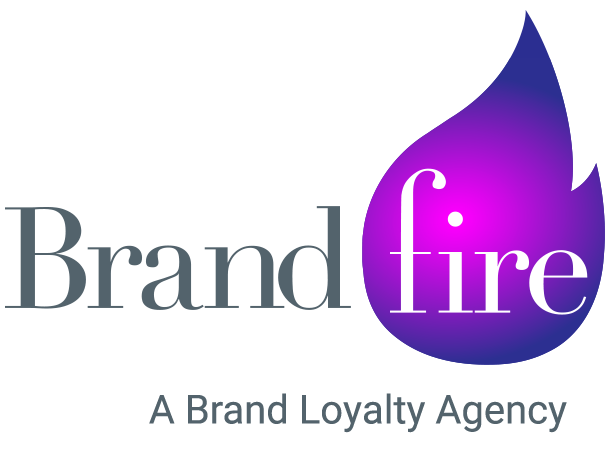
Partnership marketing, or co-marketing, harnesses the power of partnerships to reach shared marketing and business objectives. By merging their marketing prowess, companies can significantly amplify their sales, lead generation, and brand visibility. This article will explore some of the most creative and impactful co-marketing campaigns to spark inspiration for your next strategic partnership. But before we do, let’s delve a bit deeper in the world of partnership marketing or brand partnership as it is sometimes called.
Understanding the Value of Partnership Marketing
Partnership marketing is a synergistic collaboration between two or more brands that pool their resources to develop marketing initiatives that are mutually beneficial.
Key Elements of Partnership Marketing
- Strategic Alignment: Brands should have complementary goals and values.
- Resource Sharing: This could include sharing of marketing data, customer bases, technology, or expertise.
- Co-Creation: Developing joint products, services, or campaigns.
- Cross-Promotion: Using each brand’s marketing channels to promote each other.
- Revenue Sharing: Often, brands will agree on sharing the revenue generated from the partnership.
Benefits for Participating Brands
- Extended Reach: Access each other’s customer base, expanding market reach.
- Shared Costs: Marketing costs are distributed among the partners, reducing individual expenditure.
- Increased Credibility: Association with other reputable brands can enhance credibility.
- Customer Trust: Partnerships between trusted brands can increase consumer confidence.
- Innovation: Collaboration can lead to innovative products or services.
- Leveraged Strengths: Each brand can focus on their strengths, improving the overall campaign effectiveness.
Types of Brand Partnerships
- Co-Branding: Jointly creating a new product or service that includes branding from both companies.
- Affiliate Partnerships: One brand promotes another in exchange for commission on sales.
- Distribution Partnerships: One brand offers another brand’s products or services to its customers.
- LicensingIn this dynamic, one brand grants another the permission to utilize its branded assets, such as logos or mascots, thereby enhancing brand recognition and expanding the reach of branding companies.
- Sponsorships: Brands support events or activities and gain marketing benefits in return.
Considerations for Successful Partnerships
- Alignment of Target Audience: The partnership should make sense to both brands’ customers.
- Clear Objectives: Both parties should have a clear understanding of what they want to achieve.
- Measurement: Establish metrics to evaluate the success of the partnership.
- Communication: Open and regular communication to ensure alignment and address issues.
- Flexibility: Being able to adapt to changes and feedback throughout the partnership.
Examples of Successful Partnerships
- Technology Integrations An example of this is co-branding, like when a smartphone manufacturer joins forces with a camera brand to elevate the quality of the phone’s camera, a move that can significantly enhance the product’s appeal.
- Limited Edition ReleasesCo-branding also comes into play when two brands unite to develop a special edition product that merges their distinctive strengths, showcasing the expertise of each branding company.
- Bundling: Offering products from both brands together at a special price.
Through the judicious selection of the right partner and meticulous strategic planning, brands can greatly enhance their marketing initiatives and fulfill strategic business objectives that might otherwise be difficult to achieve solo.
The importance of stategic marketing partnership
Strategic marketing partnerships play a pivotal role in today’s competitive business environment. They are crucial for amplifying brand reach, diversifying customer base, and enhancing brand credibility.
By joining forces, companies can pool their resources and expertise to create synergies that result in more effective and innovative marketing campaigns. Such collaborations can lead to cost savings through shared marketing expenses, while also providing access to new markets and distribution channels. Furthermore, strategic partnerships often lead to the cross-pollination of ideas, fostering creativity and leading to unique promotional strategies that resonate with a broader audience. The combined knowledge and customer insight from two or more entities can lead to a deeper understanding of consumer behaviour, which can be leveraged to tailor marketing efforts more accurately and efficiently. Ultimately, strategic marketing partnerships can be a powerful catalyst for growth and a significant competitive advantage.
Building brand loyalty through Partnership
Forging strategic partnerships can be a powerful catalyst for building brand loyalty. By collaborating with businesses that complement your own, you can tap into new customer bases and create synergistic value that resonates with consumers. These collaborations can take many forms, from co-branded products and services to joint marketing campaigns or loyalty programs. For example, when a well-known technology company partners with a luxury car brand, they can co-create an experience that elevates both brands and fosters a deeper connection with their shared audience. By aligning with partners that share similar values and commitment to quality, companies can reinforce their brand’s message and identity, thus solidifying customer trust and loyalty. Additionally, these partnerships provide a platform for brands to showcase their innovation and responsiveness to customer needs, further cementing a loyal following. Through thoughtful and strategic alliances, brands can amplify their reach and create enduring relationships with their customers.
Why Brands should consider partnership marketing.
Standing Out from the Competition
In an era where consumers are bombarded with advertising, carving out brand differentiation through strategic partnerships can thrust your brand into the spotlight and forge a connection with your target audience.
Reinforcing Brand Identity
Partnerships, as a robust mechanism, play a critical role in increasing brand awareness and reinforcing a brand’s identity. Smaller businesses can harness these partnerships to elevate their brand awareness and credibility by aligning with larger, established brands. Conversely, these well-known entities can expand their market share and tap into fresh market segments through strategic collaborations with niche small businesses.
Offering Additional Value to Customers
Brand partnerships are pivotal in bolstering brand recognition and delivering substantial value to existing customers. By judiciously selecting partners, brands can introduce loyalty programs and tailored incentives that not only cultivate customer loyalty but also emphasize the importance of consistent branding and customer support.
Improved Conversion Rates
Customers who engage with your brand through a partnership marketing initiative are often more inclined to make a purchase, showing an increased brand awareness. This interaction, rooted in an existing interest in your products or services, can significantly enhance brand visibility and improve customer conversion rates.
Successful Brand Partnership Examples
When executed with skill, partnership marketing emerges as a premier co-marketing strategy. Our marketing blog is a treasure trove of inspiring examples, showcasing how renowned companies have leveraged partnerships to amplify their marketing strategies and achieve remarkable success.
Partnership between Spotify and Uber
In a strategic co-branding move, Spotify and Uber orchestrated a triumph with their ‘Soundtrack for Your Ride’ feature, seamlessly integrating brand partnerships into the customer experience. This innovation allowed passengers to enjoy their favorite Spotify playlists while commuting, thus sharpening the competitive edge for both brands and prompting users to opt for their services for an enhanced customer experience.
Collaboration between Spotify and Starbucks

Harnessing the power of co-branding, Spotify and Starbucks brewed a distinctive brand partnership, creating an immersive music ecosystem that showcases their commitment to exceptional customer service. Starbucks baristas, equipped with premium Spotify accounts, crafted in-store playlists, offering coffee aficionados a more personalized customer experience and positioning themselves as leading branding companies.
Airbnb and Flipboard’s Partnership

Airbnb, the renowned homestay network, embraced content marketing through a strategic co-branding partnership with Flipboard, launching ‘Experiences’ to deepen customer engagement. This innovative feature offered bespoke content, aligning lifestyle articles with the diverse interests of Airbnb’s guests, thereby fostering a more captivating and engaging customer journey.
MasterCard’s Alliance with Apple
The rollout of Apple Pay marked a significant milestone in innovative solutions, with MasterCard at the forefront as the first major credit card provider to embrace this technology. This strategic co-branding effort showcased MasterCard’s nimbleness in adapting to consumer demands and solidified its commitment to spearheading technological advancements.
American Express and Amazon’s Joint Venture
In a powerful co-branding move, American Express joined forces with Amazon, introducing a credit card that not only strengthens small business support but also enhances online marketing made easy on Amazon’s extensive platform. This alliance not only simplified the buying process for consumers but also provided deep insights into spending behaviors, revolutionizing the online shopping experience.
Balmain’s Collaboration with H&M
H&M, the acclaimed fashion retailer, has skillfully integrated co-branding into its strategy, most notably through its collaboration with the esteemed Balmain clothing line. This co-branding venture brought the allure of affordable luxury to H&M’s clientele, offering high-end designer items at more accessible price points, exemplifying a savvy move by the branding company within the competitive fashion marketing sphere.
Apple’s Partnership with Nike
Nike has been running in tandem with Apple since the early 2000s, a partnership that stands as a testament to the power of co-branding and technology integration. Their collaborative creation, Nike+, ingeniously combines Apple’s iPhone apps with Nike’s athletic wearables, redefining the dynamic between athletes and their sportswear.
H&M’s Alliance with Alexander Wang
Despite their contrasting product price points, H&M and Alexander Wang harnessed the potential of co-branding to forge a mutually beneficial alliance. They unveiled a co-branded, limited-edition collection that not only resonated with H&M’s brand positioning strategy but also introduced Alexander Wang’s high-end products to a wider market, effectively broadening their customer reach.
JD Gyms and Propello’s Partnership
JD Gyms, a prominent name in the UK’s competitive low-cost gym market, forged a comprehensive partnership with Propello, launching a loyalty program filled with enticing customer rewards. This multifaceted collaboration, which spanned across health and fitness, fashion, and meal preparation, resulted in a marked uptick in sign-ups for their premium membership offerings.
HelloFresh and Propello’s Collaboration
HelloFresh, the meal kit delivery industry’s global frontrunner, revolutionized its brand-to-brand distribution partnerships through a sweeping digital transformation orchestrated by Propello. This strategic pivot not only skyrocketed their partnership inventory by over 500% but also provided them with critical marketing technology insights, fine-tuning them
Evaluating Partnership Marketing Effectiveness and Financial Returns
Importance of Effectiveness Assessment: It’s imperative for businesses to assess the impact of their partnership marketing strategies and financial investments to determine whether their collaborative efforts are paying off.
Metrics for Success: The achievement of partnership marketing initiatives is typically evaluated using a range of key performance indicators (KPIs), which are aligned with the partnership’s objectives. These objectives could include:
- Enhancing revenue streams
- Broadening market presence
- Elevating customer satisfaction levels
To truly gauge the success and ROI of partnership marketing efforts, it’s critical to analyse these metrics over a meaningful period.
Comparing the results with industry standards can provide a clearer picture of the partnership’s standing in relation to the market at large.
By meticulously scrutinizing these factors, firms can ensure they are making well-informed decisions that could lead to improved partnership outcomes and better strategic positioning in their respective industries.
How can a Brand Partnership Agency help?
The ideal agency partner will not only showcase business partnership examples of success but also demonstrate a profound grasp of your industry and the specific demographics you aim to engage. A partnership marketing agency can offer invaluable assistance by:
- Identifying Potential Partners They leverage their extensive network and industry acumen to forge partnerships that resonate with your company’s ethos and market focus, connecting you with brands that share your values and appeal to your target audience.
- Strategic Planning Developing a strategic approach that’s in sync with your business objectives, the agency ensures that all partnerships are designed to be mutually advantageous and supportive of your wider marketing goals.
- Managing Relationships By managing daily interactions with partners, the agency helps cultivate robust partnerships, which in turn allows you to allocate your attention to other critical areas of your business operations.
- Campaign Execution The agency’s role extends to crafting and overseeing co-branded campaigns and co-marketing efforts, which may encompass joint promotions, collaborative content creation, or shared experiences aimed at engaging customers and broadening your reach.
- Performance Tracking using metrics and analytics, the agency meticulously tracks the performance of your partnership initiatives, fine-tuning strategies for optimal results and clearly illustrating the ROI of your collaborative endeavors.
By entrusting an agency with these integral functions, your business is positioned to harness their expertise and cultivate dynamic partnerships that elevate brand visibility, foster customer loyalty, and drive substantial growth.
In addition to these benefits, a partnership marketing agency can also provide valuable insights into the latest marketing technology trends and tactics. By staying up-to-date with industry advancements, they can help fine-tune your promotional strategies and ensure that your partnerships are leveraging the most effective tools and platforms. With their expertise, you can maximize the impact of your collaborative efforts and drive even greater results for your business.
Wrapping Up
Partnership marketing has emerged as a powerful strategy for companies looking to expand their market presence, solidify customer loyalty, and stimulate revenue growth. The success stories underscore the potency of such partnerships and the varied approaches that can be harnessed to fulfill mutual business goals and bolster marketing objectives.
Whether it’s about aligning with a brand that mirrors your target demographic or initiating strategic collaborations that echo shared values and business aims, the strength and potential of partnership marketing stand out. Delving into partnerships for your upcoming campaign could reveal substantial transformative benefits.
Book a Demo to learn more about how partnership marketing can benefit your business.


